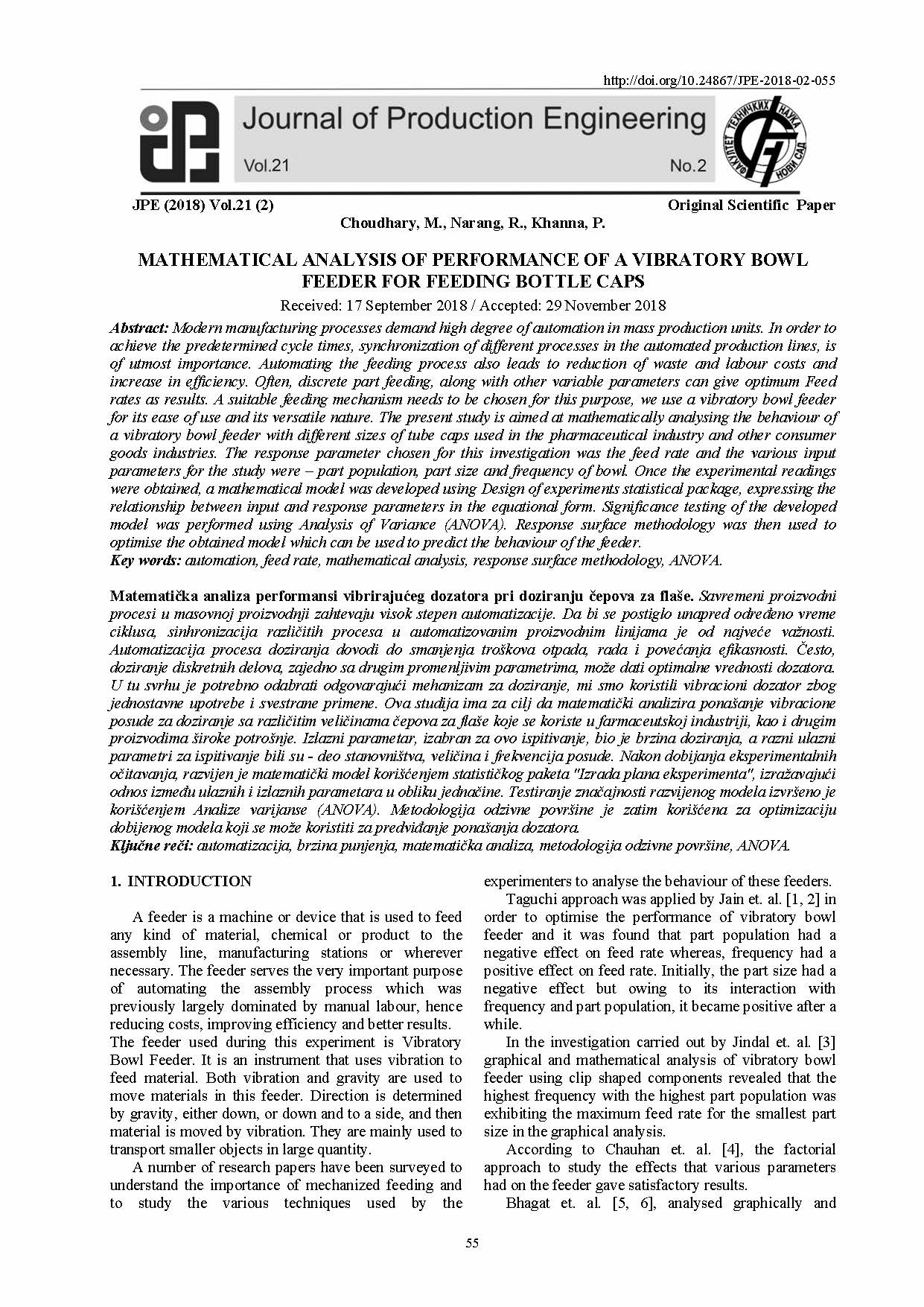Mathematical analysis of performance of a vibratory bowl feeder for feeding bottle caps

Published 2018-12-30
abstract views: 215 // FULL TEXT ARTICLE (PDF): 171
Keywords
- automation,
- feed rate,
- mathematical analysis,
- response surface methodology,
- ANOVA
How to Cite
Copyright (c) 2023 Journal of Production Engineering

This work is licensed under a Creative Commons Attribution 4.0 International License.
Abstract
Modern manufacturing processes demand high degree of automation in mass production units. In order to achieve the predetermined cycle times, synchronization of different processes in the automated production lines, is of utmost importance. Automating the feeding process also leads to reduction of waste and labour costs and increase in efficiency. Often, discrete part feeding, along with other variable parameters can give optimum Feed rates as results. A suitable feeding mechanism needs to be chosen for this purpose, we use a vibratory bowl feeder for its ease of use and its versatile nature. The present study is aimed at mathematically analysing the behaviour of a vibratory bowl feeder with different sizes of tube caps used in the pharmaceutical industry and other consumer goods industries. The response parameter chosen for this investigation was the feed rate and the various input parameters for the study were – part population, part size and frequency of bowl. Once the experimental readings were obtained, a mathematical model was developed using Design of experiments statistical package, expressing the relationship between input and response parameters in the equational form. Significance testing of the developed model was performed using Analysis of Variance (ANOVA). Response surface methodology was then used to optimise the obtained model which can be used to predict the behaviour of the feeder.

